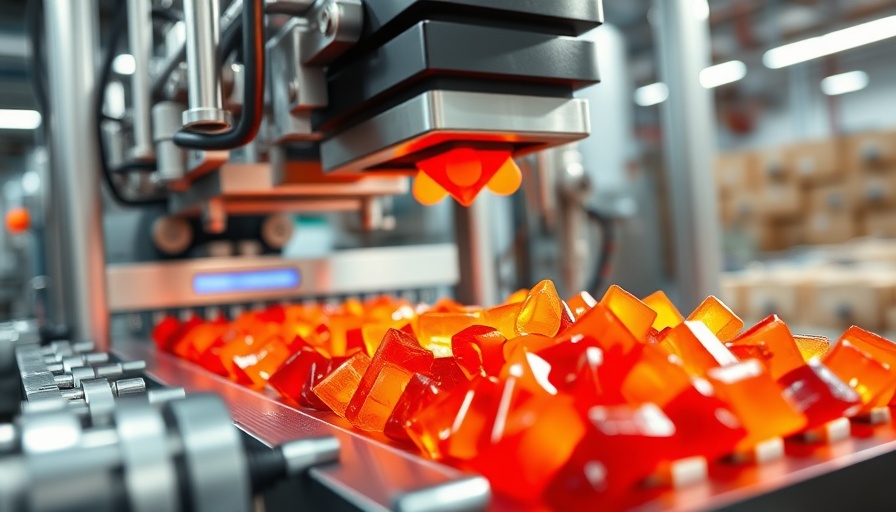
Unravelling the Science Behind Gummy Candy
Gummy candy transcends mere nostalgia; it embodies a complex interplay of chemistry and innovation. With Melt-to-Make at the forefront, the gummy production industry is undergoing a revolution that highlights the importance of designer gummy bases.
Understanding Gelling Agents and Their Impact
The texture and stability of gummies hinge on their gelling agents—traditionally, gelatin has ruled the roost. Melt-to-Make has expanded this landscape by introducing pectin-based and hybrid formulas. Gelatin provides the nostalgic chewiness but falters in high-heat conditions. In contrast, pectin, derived from fruits, offers higher thermal stability and enhances flavor release.
This pivot to pectin couldn’t come at a better time, given the increasing temperatures globally. Melt-to-Make’s pectin bases are marketed as "melt-proof," ensuring that gummy products maintain their form even in warmer settings.
The Advantages of Hybrid Formulations
Melt-to-Make doesn’t stop at pectin; they also boast a gelatin-pectin blend, which cleverly combines the best of both worlds. This hybrid offers a melting point of around 65.5 °C, elevating durability without sacrificing the enjoyable chewiness expected from traditional gummies. However, getting the formulation correct is a science in itself—too much of one ingredient or misjudged processing temperatures can lead to an undesirable texture.
Natural Colorants and Consumer Demand
As consumer preferences evolve, so does the quest for transparency in product labels. Melt-to-Make has stepped up by utilizing plant-based colorants such as elderberry juice and spirulina, striving to replace synthetic dyes. This move not only caters to the demand for clean labels but also presents its own challenges; natural colorants can fluctuate significantly in quality and stability.
The company claims to have overcome these hurdles through rigorous research and development, ensuring that their gummies look as good as they taste.
Simplifying Gummy Production
Perhaps the most impactful innovation is the logistical ease introduced by Melt-to-Make’s “90 percent complete” bases, which allow manufacturers to simply melt, pour, and finish their products. This approach minimizes the technical barriers to entry for businesses looking to explore the gummy market.
This simplification changes the game for smaller companies, allowing them to concentrate on flavor and active ingredients, rather than getting bogged down in the technical minutiae of gummy production.
The Future of Gummy Candy and Industry Technology
As technology advances, so too does the opportunity for gummy manufacturers to experiment further. The integration of device technology in production could lead to personalized gummy experiences—think tailored vitamins or enhanced flavor profiles according to consumer hydration needs or dietary restrictions.
In conclusion, Melt-to-Make is not merely altering the gummy landscape; they are redefining it. With a focus on innovative gelling agents, natural colorants, and simplified manufacturing processes, the future of gummy candy seems not only bright but also filled with potential.
 Add Row
Add Row  Add
Add 




Write A Comment